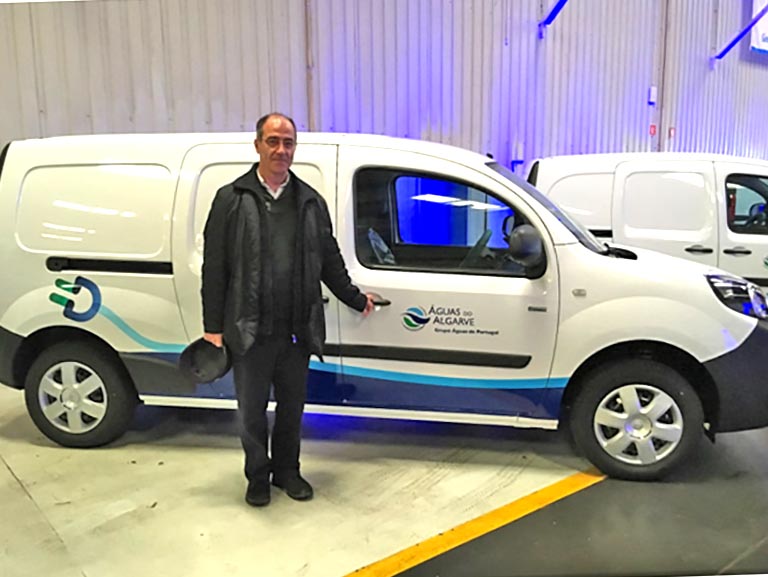Águas do Algarve is «increasingly “green””, thanks to the measures that have been carried out within the scope of the Energy Efficiency and Production Plan (PEPE), and has “been standing out so much in electric mobility as in the production of renewable energy», with the objective of achieving energy neutrality, according to the company.
The PEPE, explained to Águas do Algarve, «aggregates a wide range of energy efficiency measures and electricity production from renewable sources with the aim of reducing consumption, increasing own production and improving the conditions for purchasing electricity ».
In the area of mobility, the company acquired 14 light passenger vehicles and 2 light goods vehicles, all of them electric, which traveled approximately 310 thousand kilometers between them in 2019.
«The use of electric vehicles implied an electric energy consumption of 40.196 kWh, which corresponds to the emission of 19 tons of CO2 into the atmosphere. The replacement of conventional vehicles by electric vehicles allowed to avoid the emission of 49 tons of CO2 into the atmosphere”, assured the company responsible for the Algarve's multi-municipal water supply and sanitation system.
Another area that Águas do Algarve is betting on is energy production from renewable sources.
By the end of this year, it is planned «the installation of 13 more photovoltaic plants, with a unit installed capacity of more than 100 kW, which will allow the production of nearly 4,4 GWh/year, in addition to the 2 GWh that the company currently produces in the 60 existing photovoltaic plants in the company».
"As a complement, two more large photovoltaic plants are still under study (near 500 kW of unitary power to be installed in two large energy intensive installations that went into service in the course of 2018)", illustrated the company.
Meanwhile, the expansion of the photovoltaic plant at the Alcantarilha ETA was concluded «with an additional 186 kW of installed power, and the construction of another expansion of this plant by 45 kW was started, taking advantage of the space available on the roof of a new building under construction. the introduction of one more treatment organ at the Alcantarilha Water Treatment Plant».
Another new photovoltaic plant was also brought into service at the WWTP in Faro Olhão with 50 kW to produce in self-consumption regime.
«After the completion of these projects, still under study, the company will produce close to 8GWh per year, which will represent energy autonomy close to 10% of the company's total electricity consumption and a saving in financial resources of around €800.000/ year, as well as avoiding the annual emission of 3760 tons of CO2 into the atmosphere», summarized Águas do Algarve.
On the other hand, a reactive energy consumption reduction plan is being implemented, «which will involve intervention in 48 installations that currently represent an annual cost in reactive energy of around 47 thousand euros. The planned investment amounts to 115 thousand euros, which will make it possible to recoup the investment in about 2 and a half years».
Also within the scope of the PPEC (Plan for the Promotion of Efficiency in Electric Energy Consumption), «the implementation of nine energy efficiency measures was approved and applied for. Of these measures, we can highlight the complete replacement of all artificial lighting by lighting based on LED technology».
In the long term, the Algarve company «aims, by 2030, to become the first regional operator in the energy-neutral water sector, reinforcing its energy efficiency, producing electricity from renewable sources, resulting in the disposal of 38 thousand tons. of CO2 emissions'.
This will be possible "through the installation of hydroelectric power generation plants in its water, wind and photovoltaic pipelines, taking advantage of storage in existing water reservoirs, as well as the continuous increase in energy efficiency in terms of processes and infrastructures of its own premises'.



















Comments